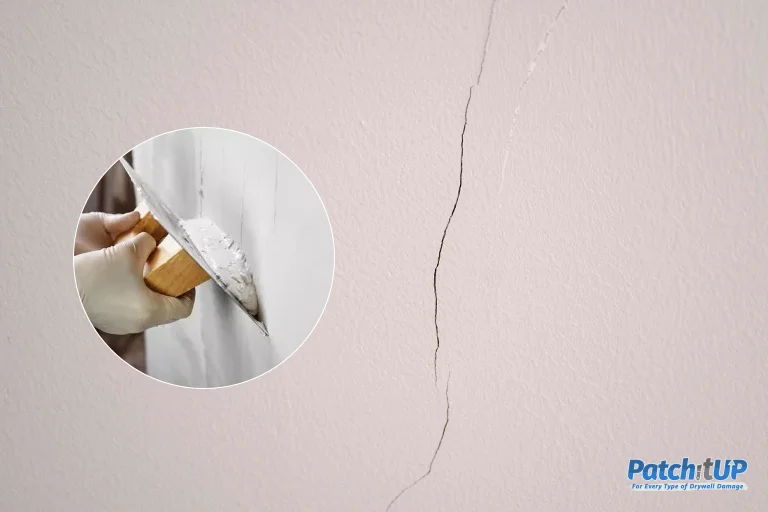Plaster walls are a classic feature in many homes, valued for their durability and smooth finish. However, they can develop holes and cracks over time due to settling, moisture, or general wear and tear. Fixing plaster walls might seem daunting, but with the right approach and materials, you can restore them to their original beauty.
In this guide, we’ll walk you through easy solutions for repairing holes and cracks in plaster walls, ensuring your home maintains its charm and structural integrity.
Understanding Plaster Walls
Before diving into the repair process, it’s essential to understand what plaster walls are. Traditional plaster walls consist of three layers: a scratch coat, a brown coat, and a finish coat. These layers are applied over a wooden lath or metal lath structure. Cracks and holes in plaster can result from various factors, including structural movement, moisture damage, or impact.
Tools and Materials Needed
For effective plaster wall repairs, gather the following tools and materials:
- Utility knife
- Putty knife
- Plaster patching compound
- Sandpaper (medium and fine grit)
- Primer
- Paint
- Safety goggles and gloves
Fixing Small Holes
Small holes in plaster walls, often caused by nails or screws, are relatively easy to fix. Here’s a step-by-step guide:
- Clean the Area: Use a utility knife or putty knife to remove any loose plaster or debris from the hole.
- Apply Patching Compound: Using a putty knife, fill the hole with a plaster patching compound. Smooth it out so that it is level with the wall surface.
- Let it Dry: Allow the patching compound to dry completely. This may take several hours, depending on the product.
- Sand the Surface: Once the compound is dry, sand the patched area with medium-grit sandpaper to smooth it out. Follow up with fine-grit sandpaper for a seamless finish.
- Prime and Paint: Apply a primer to the patched area, then repaint to match the rest of the wall.
Repairing Cracks in Plaster Walls

Cracks in plaster walls are common and can be repaired with a bit more effort. Here’s how:
- Score the Crack: Use a utility knife to widen the crack slightly. This helps the patching compound adhere better.
- Remove Loose Plaster: Clear out any loose plaster from the crack with your putty knife.
- Fill the Crack: Apply plaster patching compound to the crack using a putty knife. Press the compound into the crack to fill it completely.
- Smooth It Out: Smooth the surface of the compound with your putty knife. For deeper cracks, you may need to apply multiple layers, allowing each layer to dry before adding the next.
- Sand the Area: Once the compound is dry, sand the repaired area with medium-grit sandpaper, followed by fine-grit sandpaper for a smooth finish.
- Prime and Paint: Prime the repaired area and then paint to match the existing wall color.
Fixing Large Holes
Larger holes require more attention and a slightly different approach. Follow these steps:
- Clean the Hole: Remove any loose debris from the hole with a utility knife.
- Apply a Patch: For large holes, you’ll need a plaster patch or mesh. Cut a piece of plasterboard or mesh to fit the hole and secure it in place.
- Apply Patching Compound: Spread plaster patching compound over the patch, extending it slightly beyond the edges. Use a putty knife to smooth it out.
- Build Up Layers: For a more substantial repair, apply multiple layers of compound, allowing each layer to dry before adding the next.
- Sand the Surface: Once the final layer is dry, sand the surface smooth with medium and fine-grit sandpaper.
- Prime and Paint: Prime the patched area and repaint it to blend with the rest of the wall.
Tips for a Professional Finish
- Feathering Technique: When applying the patching compound, feather the edges by applying more pressure to the edges of the putty knife. This helps the patch blend seamlessly with the wall.
- Use Quality Materials: Investing in high-quality patching compounds and paints ensures a better finish and long-lasting repair.
- Patience is Key: Allow adequate drying time between layers of compound and sanding stages to achieve the best results.
Conclusion
Repairing holes and cracks in plaster walls doesn’t have to be a daunting task. With the right tools, materials, and techniques, you can restore your walls to their original condition and maintain the beauty and integrity of your home.
For more detailed guidance and professional-grade materials, you can always contact PatchitUP. They offer a wide range of services, including plaster repair, and expert advice to help you achieve a flawless repair, ensuring your plaster walls look as good as new.
FAQ’s
Q. How do you repair small cracks in plaster walls?
A. Clean the area, widen the crack, fill it with plaster patching compound, sand it smooth, and then prime and paint.
Q. What materials are needed to fix holes in plaster walls?
A. You’ll need plaster patching compound, joint compound, sandpaper, a putty knife, a utility knife, primer, and paint.
Q. Can I use the joint compound for plaster repairs?
A. Yes, the joint compound can be used to smooth over patched areas and blend repairs seamlessly with the rest of the wall.
Q. How do I prevent cracks in plaster walls from returning?
A. Control humidity, conduct regular inspections, use quality materials, and address any underlying structural issues.
Q. When should I seek professional help for plaster wall repairs?
A. Seek professional help for extensive damage or recurring issues, or if you prefer expert results for a flawless finish.


Leave a Reply